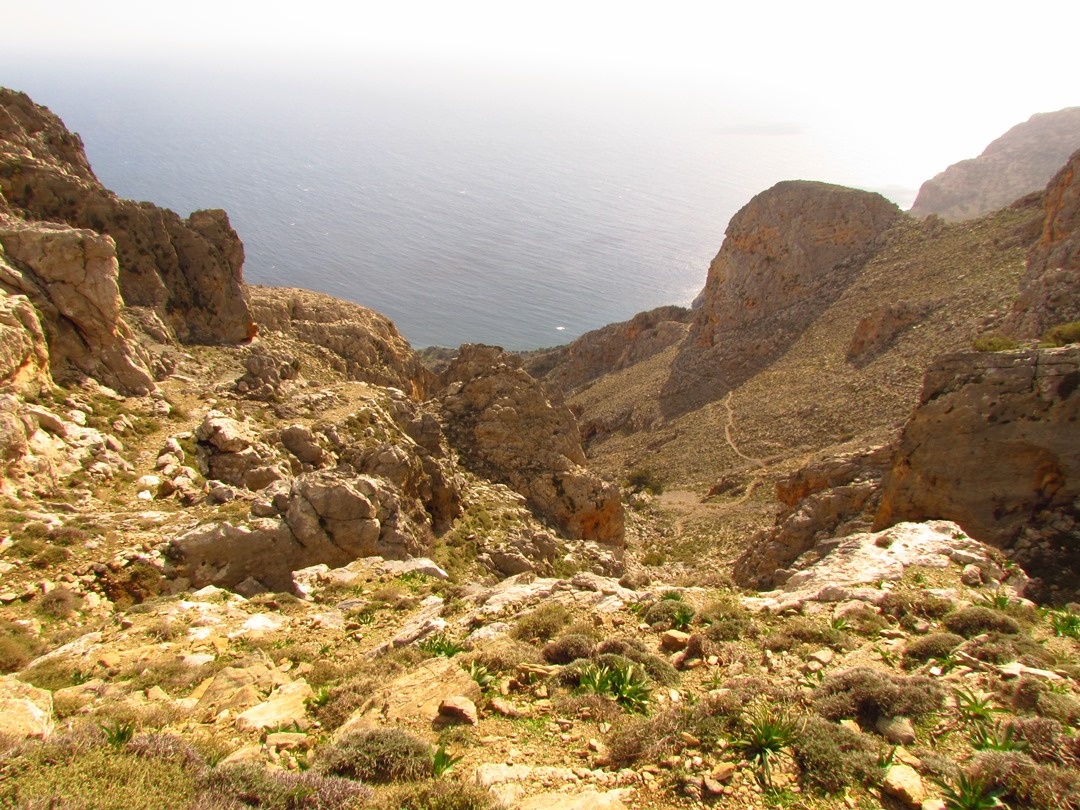
Nearest hamlets: Paranymfoi, Treis Ekklisies
Distance: 6.7km
Duration: 2.5 hours (downhill all the way)
Entrance coordinates: 34° 57.608'N / 25° 7.170'E (Agios Pavlos Church)
Exit coordinates: 34° 57.199'N / 25° 8.128'E (Treis Ekklisies)
Trail type: Well-trodden trail with markers
Difficulty: Moderate
Recommended season: Year-round (be careful on rainy days)
Amenities: There are cafés at Paranymfoi and, in the summer, taverns, cafés and accommodation at Treis Ekklisies
The trail affords an exceptional view of the Libyan Sea and the coastlines of Asterousia mountain range, which suddenly plunges into the sea, creating coves and sea caves that are unique in Crete.
From the exit to Paranymfoi head on for approximately 1 km on an easy-to-drive dirt road until the byzantine church of St. Paul, where you can park and start your hike on the well-maintained trail that leads down to the coastline.
About halfway down there is a sign pointing towards Tris Ekklisies and Koudouma Monastery.
Follow the first sign and further along you will encounter the largest natural carob tree forest in Europe. The trail continues along the sea until Tris Ekklisies, built at the exit of Abas gorge.
To return, you have two options: (a) you can have arranged to have a car waiting at Tris Ekklisies so as to head up to Paranymfoi, (b) to hike another three hours uphill along the ‘Klisoura’ trail towards Paranymfoi. The ascent follows a fairly visible trail, which, however, is rather rough going.
Download the kml file of the route in your device: (kml) Paranymfoi - Treis Ekklisies
- 1 Paranymfi
- 2 Monastery of Agios Pavlos
- 3 Charoupodasos (Carob tree Forest)
- 4 Treis Ekklisies (Three Churches)
Paranymfi
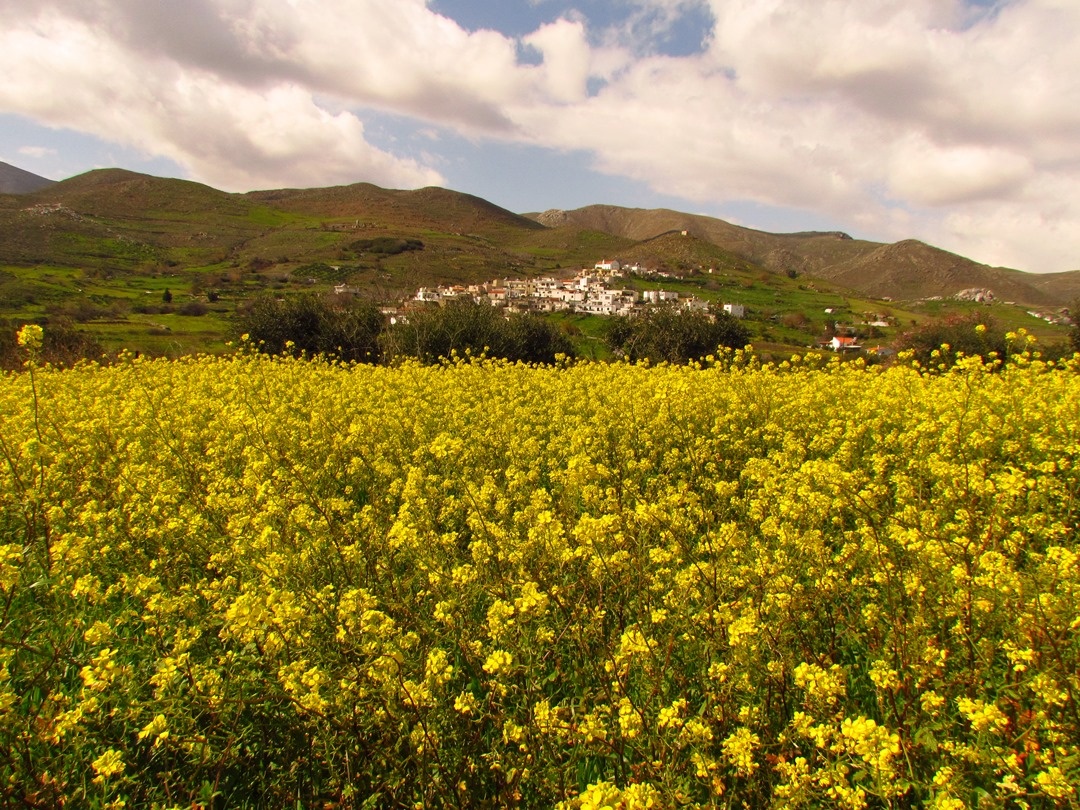
This small village with its few residents and the three hospitable coffee houses is a landmark point for many routes and activities in the east zone of the Asterousia. Near here is the famous Abas location. It is a wonderful vantage point looking out onto the southern coastline offering a truly breathtaking view. Heading from Paranymfoi to Mournia, after about 800 meters, you come across a small sign pointing to Abas. Follow the narrow lane and park your car where the road ends. The old watermill is a characteristic feature: it ran on the water from the stream flowing into the gorge right below you. Throughout the year, but not in the summer, you can see this active stream. Any daredevils among you should not follow this route, because you will soon find yourselves needing ropes and equipment to continue you descent by canyoning. Follow the path going in the opposite direction and reaching the ‘horseshoe’ shaped Abas cliff, where you can discern the hamlet of Treis Ekklisies (Three Churches) in the distance. It is on these cliffs where the bearded vulture and the griffon vulture nest and you are bound to come across them during your tour. Avoid wearing bright colours, because they frighten the large, yet sensitive, birds of prey. If you are interested in bird watching, you can be supplied with all necessary visual equipment from the Information Centre of nearby Ethia (following prior arrangement with the competent Town Hall personnel).
From Paranymfoi you can also head to Kofinas, along an old footpath that is not easily discernible; however, if you feel like exploring, get ready to discover the rich biodiversity of this land with the wide range of ecosystems. Another landmark is the small gorge connecting Paranymfoi with the next village of Platania. Ask the way at the village.
If on the other hand you are interested in finding out why the Asterousia range is called ‘the Holy Mountain of Crete’, follow the dirt road leading away from Paranymfoi to the southwest that takes you to the church (old monastery) of Agiou Pavlou (St. Paul). A well-maintained and clearly signposted trail starts there and takes you above the only carob tree forest on Crete; the path forks out at that point (there are signs) and you have to choose whether you will go to Treis Ekklisies or to Koudoumas Monastery. Either choice will offer you unforgettable moments.
Monastery of Agios Pavlos
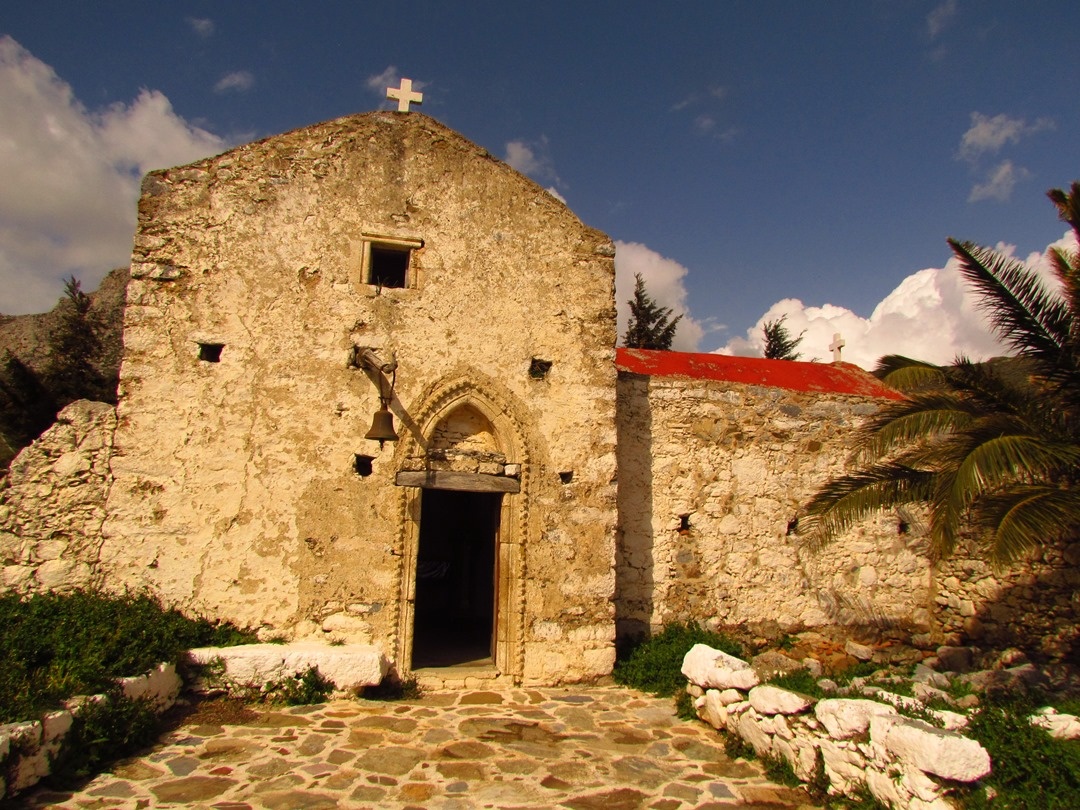
The Agios Pavlos Monastery [St. Paul] dates back to the Venetian rule period. It used to operate as a hermitage site until about the mid-20th century. This location was not chosen in random; it is on the road from Paranymfoi to Koudoumas Monastery, above the imposing cliffs and rocky caves of the Asterousia, which is ideal for hermits.
The Monastery flourished when scholar Iosif Filagris ran the neighbouring Treion Ierarchon Monastery, at Lousoudi ton Kapetanianon. Agios Pavlos Monastery operated throughout the Venetian era. During the Ottoman rule, it was stripped of its belongings and when, during the 19th century, attempts were made to re-establish it, the residents of Paranymfoi and Platanas eagerly offered their money. The rapid growth of Koudoumas Monastery had a negative impact on the Monastery, which was gradually abandoned.
Right below the chapel, which is built on a natural balcony, starts a precipitous ravine and the cliffs of the south Asterousia, one of the most imposing locations on Crete. This area is ideal for settlement, and had likely attracted numerous residents during antiquity, judging by the archaeological findings interspersed in the entire area.
Architecturally, this Monastery is a single-nave basilica with a narthex, while the pointed door-frame is carved in limestone, a typical practice in the Venetian era. In the church interior, parts of the beautiful original murals that used to adorn it are still visible and have been roughly repaired. In the Monastery yard there are ruins of monk cells, annexed to the church, as well as a few graves.
Charoupodasos (Carob tree Forest)
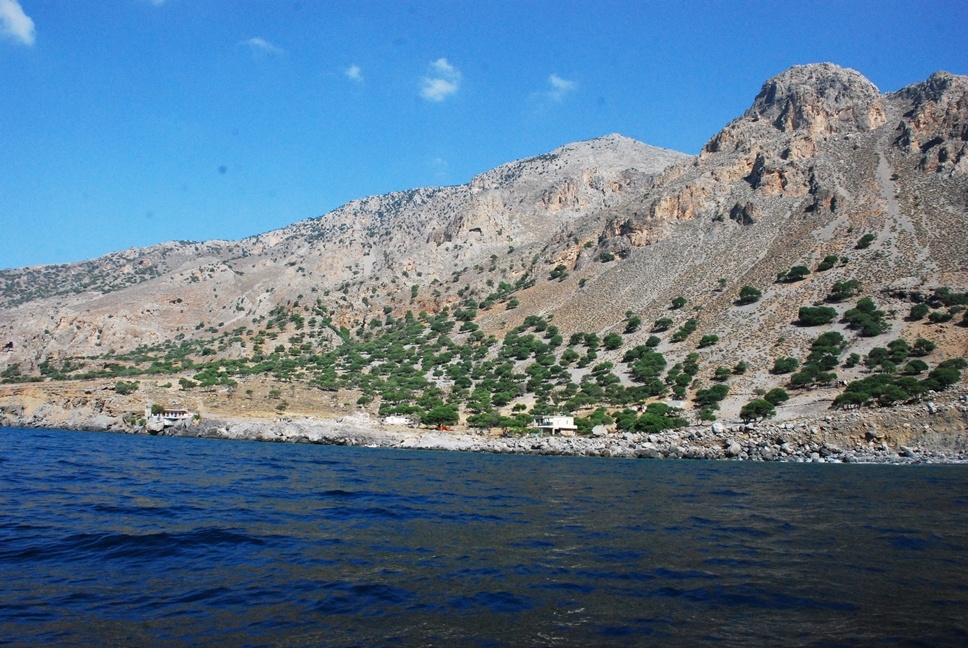
The Treis Ekklisies carob tree forest is situated in one of the most isolated areas in Europe. It is very hard to reach, since it is accessible through a rough 10km dirt road starting in Paranymfoi, crossing the Asterousia Mountains and leading to the beach. After reaching Treis Ekklisies, you should continue west after the village hill, up until the Psili Ammos (or Ornio) beach.
The mountain slopes along the road to the beach are green with tall carob trees. The carob forest of Treis Ekklisies is the largest natural carob tree forest in Europe, although it remains largely unknown. These hardy carob trees thrive in dry, rocky areas and grow at a distance from each other.
Their tough, sweet fruit resembles a hard bean. In older times, Cretans used to eat it as a dessert, while it remains a healthy alternative to chocolate. It was also used to manufacture film reels. In the past, the driest areas of Crete were ideal for carob tree cultivation to create animal fodder, but their cultivation has now declined dramatically.
Treis Ekklisies (Three Churches)
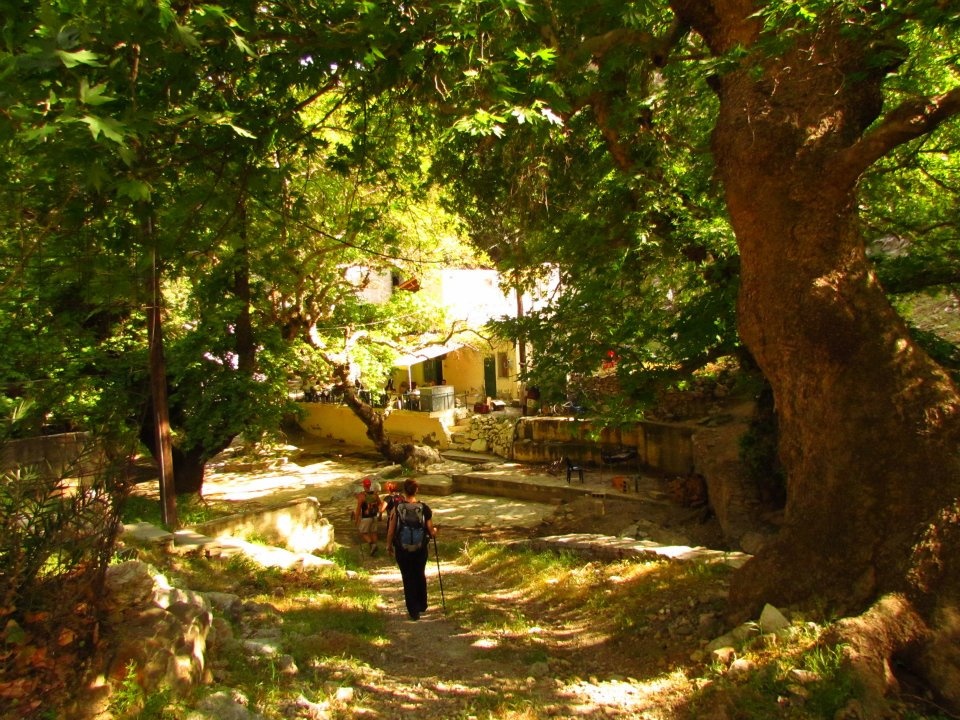
This Asterousia village is famous for the Abas Gorge and waterfall which, when active (from the end of autumn to the end of spring) creates a 140m waterfall, the last carob tree forest on Crete and the astonishing beaches and coastline which stretch to the east and west of Treis Ekklisies.
Don’t be deterred by the number of buildings in this seasonal holiday settlement, as in addition to the astounding scenery and tours, you can enjoy meze dishes and raki in the small taverns. If you find yourself here during the annual August ‘kakavia’ [bouillabaisse] festival, you’ll certainly enjoy the local music and folklore dances. This settlement owes its name to its three churches [‘treis ekklisies’], Metamorfosi Sotira [the Transfiguration of the Saviour], Agios Georgios [St. George] and Panagia [the Virgin Mary].


